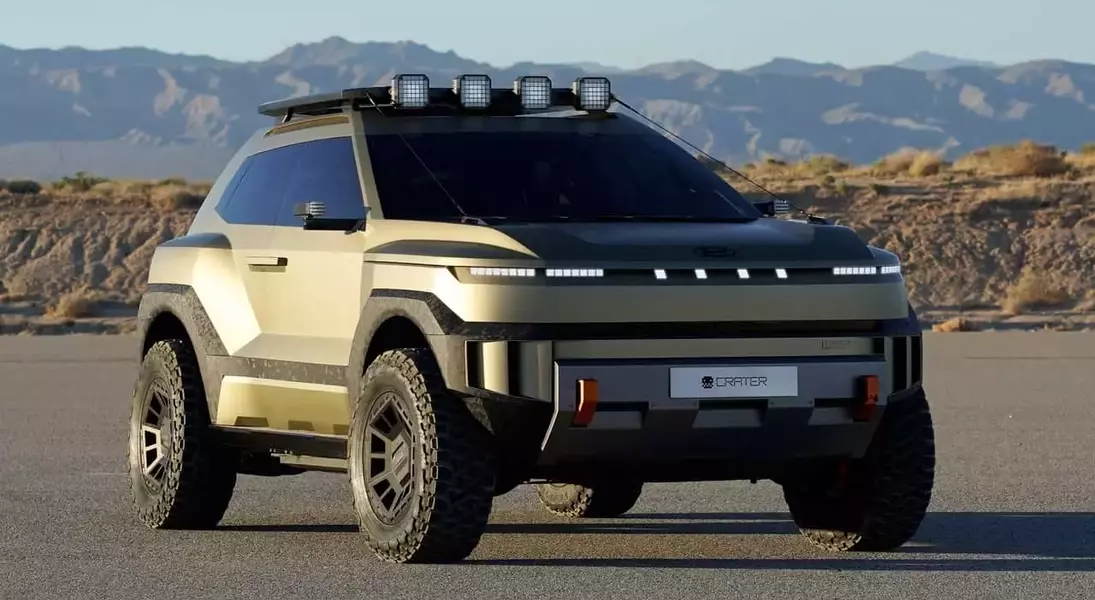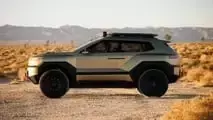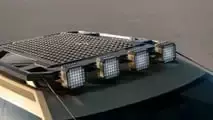














Hyundai is making a bold statement with its new Crater concept, demonstrating a strong ambition to venture into the challenging world of serious off-roading. While the brand currently offers XRT models with some rugged enhancements for vehicles like the Ioniq 5 and Santa Fe, the Crater represents a significant leap forward, showcasing a vision for truly capable off-roaders within the Hyundai lineup. This innovative concept, packed with advanced features and a distinctive design, points to an exciting direction for the future evolution of Hyundai's adventure-ready vehicles.
Hyundai Crater Concept: A Glimpse into the Future of Off-Roading
The newly unveiled Hyundai Crater concept, a striking SUV, embodies a future where Hyundai's XRT range could evolve into formidable off-road machines. Adorned with imposing 33-inch all-terrain tires, robust underbody protection, integrated tow hooks, and an array of auxiliary lighting, the Crater immediately projects an image of extreme capability. Its exterior features a digital pixel camouflage, reminiscent of the Ioniq 5 XRT, alongside intricate hidden details that add character and intrigue.
A notable design element is the "Crater Man" logo, a tiny figure subtly integrated into the anodized recovery hooks on the front bumper. This distinctive mascot also appears throughout the vehicle's interior, adorning seat buckles and the dashboard, establishing a cohesive brand identity for the concept.
The interior design is equally revolutionary, eschewing a conventional dashboard in favor of a cylindrical, suspended structure held by two straps. This innovative setup incorporates four detachable square screens that display various widgets, such as Spotify, and can be completely removed from the vehicle. The cabin is further enhanced by ambient rust-orange lighting, creating a warm and inviting atmosphere. The seating and central console feature Hyundai's innovative "Curve of Upholstery" technique, ensuring all touchpoints are crafted from soft, curved materials, eliminating harsh plastics for a premium feel.
While Hyundai has remained discreet about the Crater's specific mechanical specifications, confirming only its electric powertrain, speculation points towards a dual-motor configuration drawing power from the Ioniq 5's 84.0-kilowatt-hour lithium-ion battery, potentially delivering 320 horsepower and 446 lb-ft of torque. The concept's off-road prowess is further underscored by the presence of controls for low-range gearing and locking differentials, indicating a genuine design intent for extreme terrain navigation.
Regrettably, the Hyundai Crater is not slated for direct production as a direct competitor to off-road stalwarts like the Ford Bronco or Jeep Wrangler. Instead, it serves as a powerful conceptual preview, offering a tantalizing glimpse into the potential direction and capabilities of Hyundai's future XRT models. Today's XRT vehicles are more aligned with "soft-roading" capabilities, but the Crater concept suggests a shift towards more robust and adventurous offerings in the years to come.
The Hyundai Crater concept is a testament to the brand's evolving design philosophy and its burgeoning interest in the electric off-road segment. This visionary vehicle encourages us to ponder the immense possibilities that lie ahead for Hyundai, pushing the boundaries of what consumers can expect from their future adventure-ready vehicles. It's a clear signal that Hyundai is not content with the status quo and is actively exploring new frontiers in automotive design and engineering.
